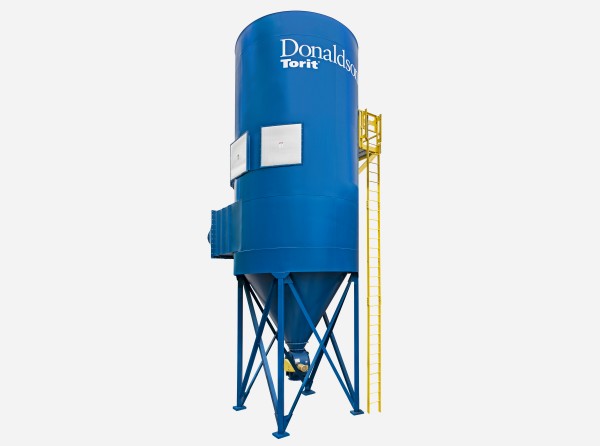By Kyle Nannenga, Donaldson Torit Pleated Bag Expert
In every industry, there are periods when planned activities do not occur in a process. In plant operations, this often means a specific timeframe during which production equipment is offline or unavailable for use. This phenomenon is called downtime, and it can be extremely costly from both an equipment standpoint and in regards to lost production time.
It’s likely unrealistic to expect a plant to run without issue 24 hours a day, 7 days a week, 365 days a year. Therefore, plant managers have to schedule periods of time to perform maintenance on systems.
There are two types of downtime - planned and unplanned. And there are costs associated with each.
Planned Downtime
In most plant operations, there are scheduled time periods per week, month, quarter, and/or year in which specific equipment is taken offline to allow for preventative maintenance. This is generally referred to as scheduled or planned downtime when equipment is removed from production. These scheduled downtime events are imperative to avoid unscheduled production disruptions. Prescheduling these periodic reviews allows personnel the time necessary to conduct maintenance checks and/or to repair equipment to ensure equipment runs at required capacity.
Unplanned Downtime
Unplanned downtime, as its name suggests, occurs unexpectedly and is difficult to predict. Such unscheduled downtime causes significant disruptions to plant operations. Plant personnel typically have one goal in mind when unscheduled downtime occurs: get the production up and running as quickly as possible. Each minute a plant is not running, the losses can range from several thousand dollars per hour to several hundred thousand dollars per hour!

Downtime Awareness
Studies conducted on average cost of production loss per industry are making companies more aware of the importance of reducing both unplanned and planned downtime in their operations.
Currently, maintenance managers are tasked with increasing the operational life and reliability of production equipment, reducing production downtime, and improving overall safety and working conditions in the production environment. These demands have highlighted the importance of quality products in production equipment, as well as the importance of maintenance in plant operations.
One area maintenance managers focus on is the improved performance and longer life in their dust collection equipment.

Dust Control
In many plant operations, dust control is an integral part of the production process. Dust collectors handle applications ranging from: filter receivers (commonly used in pneumatic bulk material conveying and central vacuum systems), nuisance dust collection (bag dumps, bin vents, bulk packaging, rail car and truck loading, and belt conveyors), and process ventilation (grinding, milling, size reduction, dryer applications, and mixing and blending).
The most common dust collector in plant operations is the traditional baghouse collector. The traditional baghouse collector uses bag filters, or socks, to remove dust from a conveying airstream. Many baghouse designs extend filter life by using compressed air to pulse clean these filters on a periodic basis in order to dislodge the deposited dust cake and return the filters’ flow characteristics.
Baghouses have been the workhorse in industry for decades. As baghouses age, they need more Tender Loving Care or preventative maintenance (PM) to maintain operation, and the larger the baghouse, the more TLC the bag filters require. Bag filters are typically changed out as the average pressure drop gets too high or with upset conditions that may damage the bags (i.e. bag abrasion, dust blinding, temperature surges, or just mis-application).
Changing filters in collectors can be very labor intensive, time consuming, and - quite frankly - a filthy process. The process of removing filter support cages and then the dirty bags can consume tremendous amount of personnel time. Depending on the quantity of filter bags and the design of the collector, the total time to complete a filter bag change-out can easily exceed 24 hours. Even during planned downtime, this process can significantly exceed the resources plant operations allocated when the shutdown was scheduled.
When upset conditions occur (i.e. broken or abraded bags, premature blinding of the bags, or damaged bags from high temperature excursions) the unplanned downtime escalates into a very time-sensitive, critical, and costly situation. If replacement bags are not in stock, the maintenance manager may have to pay added charges to expedite delivery of replacement bags, sometimes at an added cost of several thousand dollars. Even when the bags are received at the plant, it may still take plant personnel more than 12 - 24 hours to fully replace the bags. Beyond the unexpected cost of the replacement bags and the expedited freight to get those bags quickly, another significant cost to consider is the cost per hour of lost production. In some facilities and industries, such an upset condition could cost a plant well over $250,000 in lost production!
Minimizing Downtime
Part of the challenge in minimizing both planned and unplanned downtime is to reduce the resource hours necessary to conduct a filter change-out while at the same time extending the serviceable life of the filters. In combination, the longer life and the quicker change-out will reduce downtime costs. Given this reality, there has been a shift in recent years from buying conventional bag filters to buying pleated bag filters for baghouse operation.
The Case for Pleated Bag Filters
Pleated bag filters combine the functional benefits of conventional bag filters with the benefits of cartridge filter technology. Pleated bag media is available in spunbond polyester, ePTFE membrane, and nanofiber on spunbond. Each of these media options can optimize the pleated bag filter’s efficiency. Pleated bag media offers higher efficiencies and more filter media in a filter package that is much shorter than a conventional bag filter. As a result of these features, pleated bag filters can offer on average 2 - 3 times the filter life of a traditional bag filter.
How Pleated Bags Minimize Downtime
As a direct replacement for traditional bag filters and cages, pleated bag filters provide longer filter life and less maintenance. Plant staff won’t have to pull a filter support cage and then a filter bag during filter replacement. Installation and removal of the pleated bag filters is quicker and easier due to the one-piece design of the pleated bags. The ease of installation also decreases the dust exposure to maintenance personnel because it is a considerably cleaner process during change-out.
Eliminating the cage and utilizing shorter pleated bag filters simplifies installation and reduces replacement to a fraction of the time. This decreases lost production time and reduces the maintenance and labor cost attributed to changing out conventional bag filters and cages.
The shorter length of pleated bag filters also provides an increased dropout space, which encourages material fallout, allowing heavier, more abrasive-particulate to fall out in the opened space while lighter dusts are filtered by the efficient media. This significantly reduces potential abrasion on the pleated bag filters, resulting in longer life for the pleated bag filters and reduced downtime associated with bag abrasion.
The pleated bag filter can also provide significantly lower pressure drop when compared to traditional bag filters. The increased filter area and higher permeability of pleated filter media presents an easier path for the airflow. A given volume of air per unit of time (CFM) can be processed at a lower pressure drop translating into energy savings. And less energy means lower operating costs, which benefits the plant’s operational budget.

In some instances, the lower pressure drop available with pleated bag filters can allow pleated bag filters to move a larger air volume with the same amount of energy. However, special attention to collector designs and airflow patterns are critical when considering this potential benefit.
Finally, the increased efficiency available with pleated bag media such as ePTFE membrane or nanofiber media can allow enhanced performance on capturing submicron dust particles, where conventional bag filters just cannot provide performance. So pleated bag filters can be very beneficial in situations where baghouse collectors must improve filtration performance. This efficiency when coupled with the enhanced surface-loading behavior of pleated bag media can offer both longer filter life and lower emissions.
Pleated Bag Case Study in Reducing Downtime
A Southwestern U.S. manufacturing plant was having major downtime constraints with its baghouse collector on a dryer application. The abrasive nature of the application resulted in personnel changing filter bags every five weeks. Unplanned downtime resulted in losses averaging roughly $20,000 per hour so the 12-hour change-out associated with this baghouse was approaching a $250,000 loss per event.
A switch to pleated bag filters offered not only more surface filtration but also a shorter filter configuration. Pleated bag filters also allowed the customer to run the baghouse at a lower pressure drop while virtually eliminating the plant’s bag filter abrasion issue.
The frequency of filter change-outs improved from a change-out every 5 weeks to one every 24 months, and the time to actually accomplish a filter change-out decreased from 12 hours to only 4 hours. Pleated bags not only lasted longer, but maintenance time to change them out was significantly reduced as well, allowing this customer to minimize lost production time.
While more attention is being directed at downtime cost for good reason, keep in mind the added value pleated bag filters can provide in applications. By achieving higher efficiencies, lower stabilized pressure drop, and longer filter life, you may significantly improve plant operations while reducing planned and unplanned downtime.




